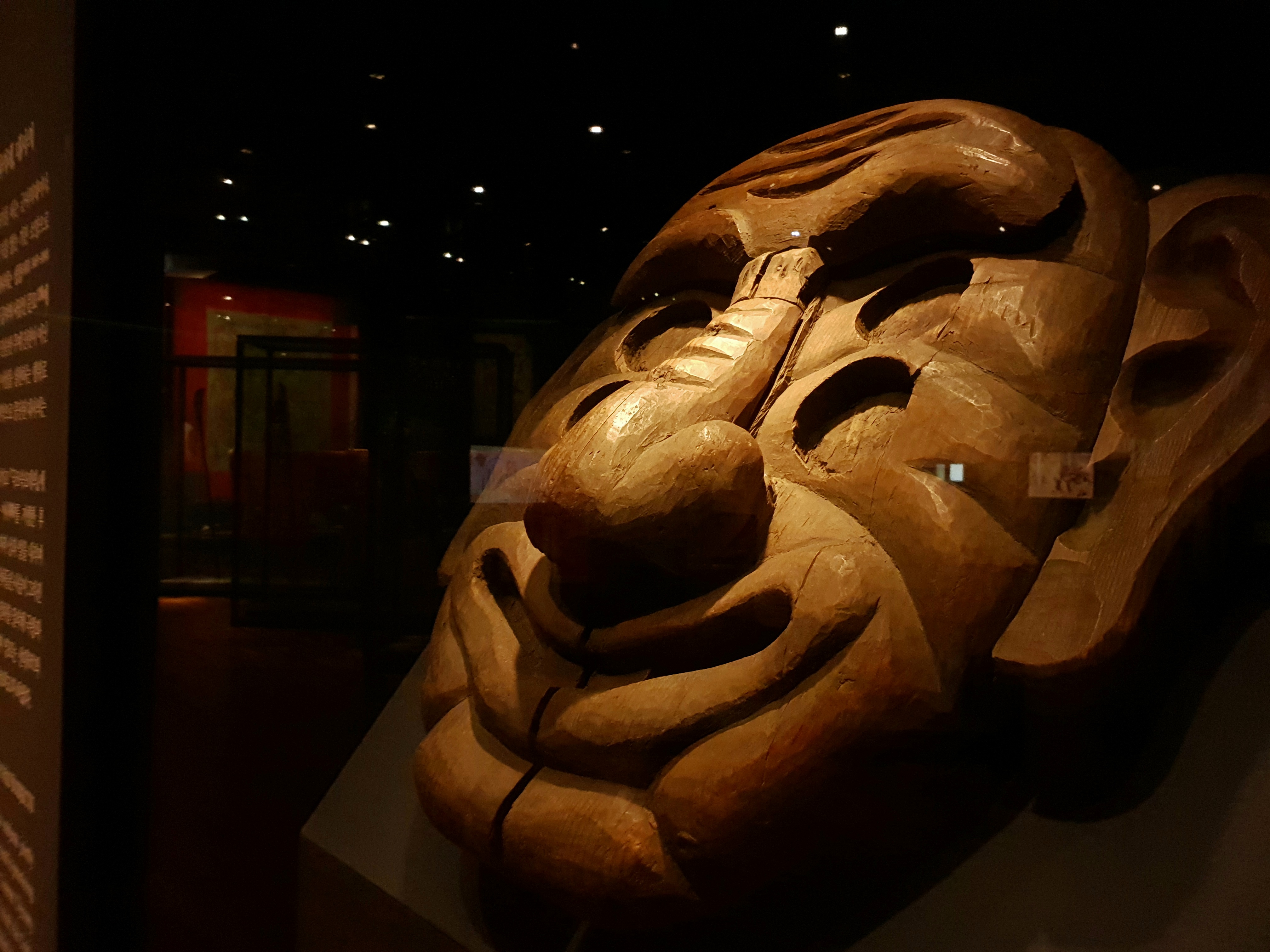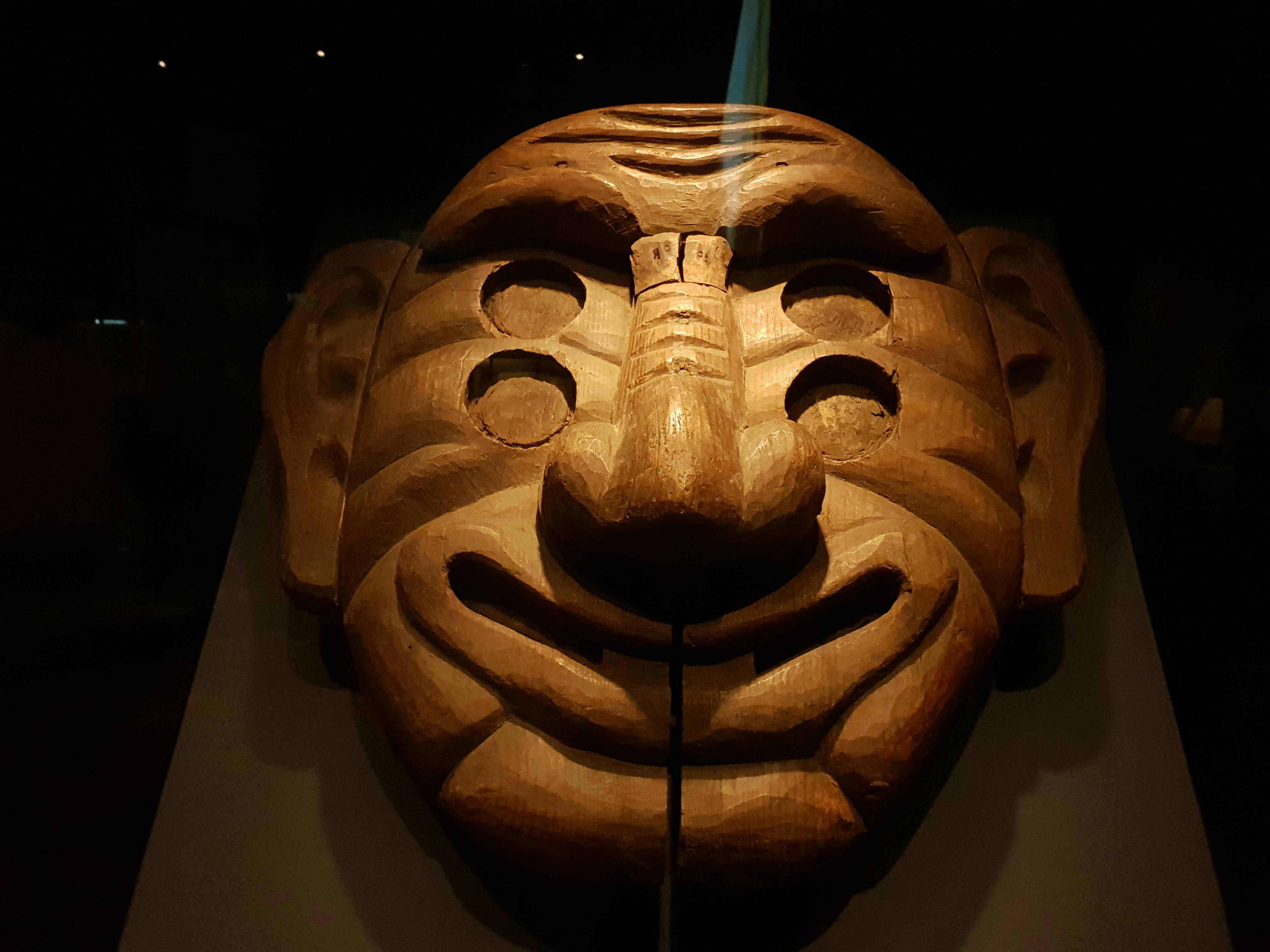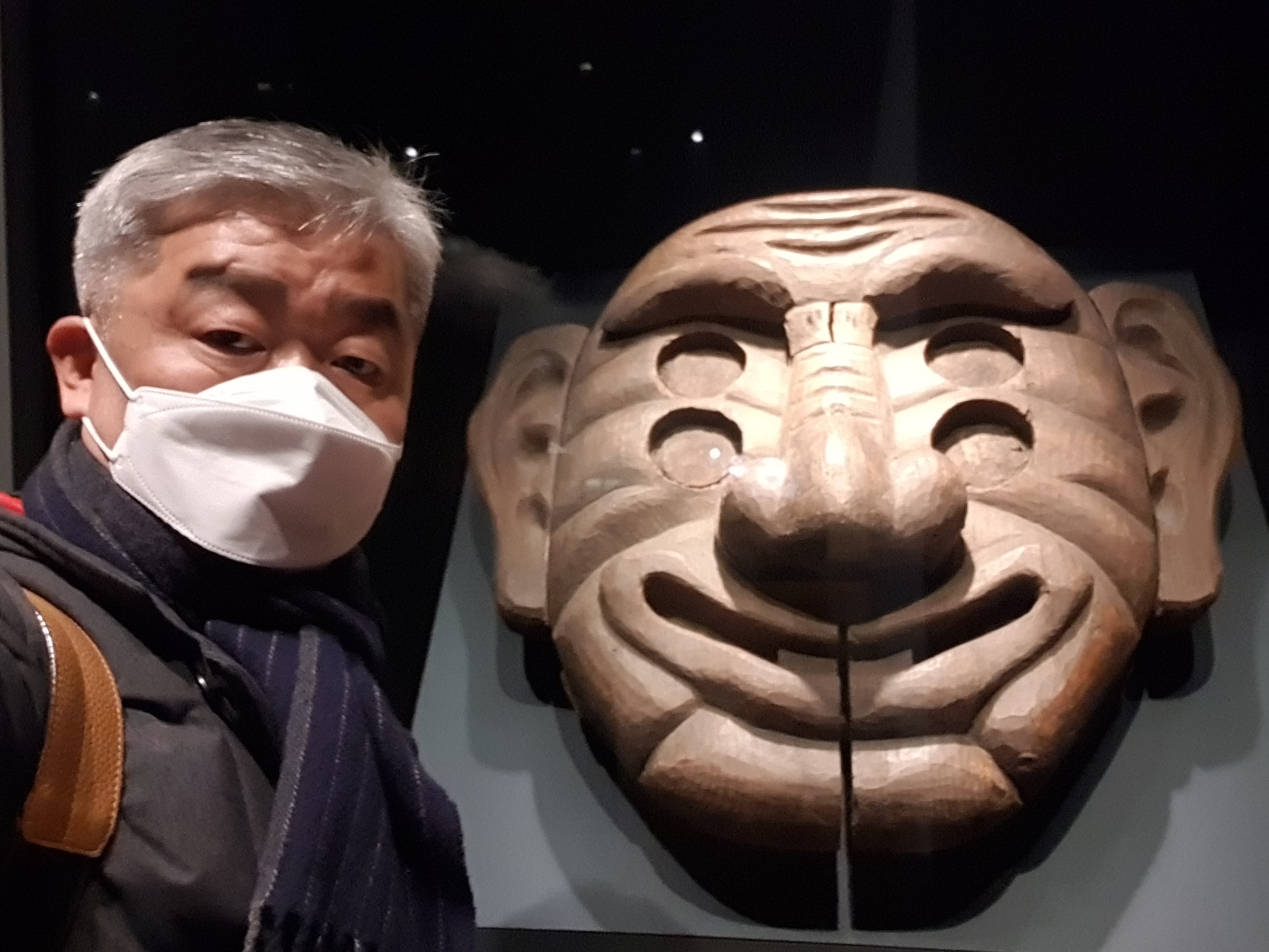Bangsangsi Mask for Exorcism
Age : Joseon Period

Bangsangsi Mask was worn by a clown with the title Bangsangsi to drive away evil spirits at a funeral or a narye (annual exorcism) in a royal court.

This mask was also used during events in the royal court, such as King's outings, receptions of foreign envoys, or other major occasions.

Four Bangsangsi wearing red costumes and masks drove away evil spirits with fire, showing off vivid colors or hitting the air, along with other masked performers.

This ceremony, which seems more or less like a dramatic play, must have been an important ritual, wishing for peace and prosperity on national occasions.

At a funeral, Bangsangsi guided a funeral procession marching in the front of the line on the way and drove away evil spirits from the burial ground.

The Bangsangsi's mask for a funeral, which was made of paper and wood, was generally burnt or buried with the dead body.

This custom, which originated in the Zhou Dynasty in China, was introduced to the Silla Dynasty in the 5th~6th centuries for funerals.

Later, it had also been practiced to drive away evil spirits since the 6th year of the reign of King Jeongjong of the Goryeo Dynasty and throughout the Joseon Dynasty.

The Bangsangsi Mask was discovered along with other funeral supplies in a warehouse of Changdeokgung Palace in 1970.

It is a large mask measuring up to 78 cm long and 73cm wide, with a single board of pinewood used to carve out its face with four eyes, nose, mouth, and eyebrows.
It has deep wrinkles on its smiling face, and its huge ears are very impressive.

There is a little trace of green and red paints on the eyebrows, but the overall mask is discolored to its original wood color.
This particular mask was made in the Joseon Dynasty.

Since no eye was made on the mask, it is believed to be a model in actual size rather than a mask used for an actual funeral.
It is assumed to be a ceremonial mask to ward off evil spirits in a royal court, or the mask was probably hung on the wall to guard properties against evil spirits.

As the only surviving Bangsangsi Mask of the Joseon Dynasty, it had been used since the Goryeo Dynasty; thus serving as valuable material in studying funeral customs and even in researching the history of folk plays.

方相氏는 방상시라 쓰기도 한다. 축귀逐鬼 의식인 나례儺禮에서 쓰던 가면이다. 저런 험상궂은 얼굴 보면 귀신들이 다 도망간다 해서 저리 만들었다.
국립고궁박물관이 개최 중인 군사의례 특별전에다가 빌려다 놓은 것인데 사람을 맞아야지? 국립중앙박물관 소장품이지만 본래는 궁궐에 있던 것이다.

'문화재현장' 카테고리의 다른 글
| 유리구슬로 구현한 유리장세계 (0) | 2021.01.03 |
|---|---|
| 호랑이에서 비롯하는 발병부發兵符 (0) | 2021.01.02 |
| 부안 서외리 당간 扶安西外里幢竿 (0) | 2020.12.26 |
| 오윤겸 무덤에 신도비가 없는 이유 (0) | 2020.12.22 |
| 장독대의 본향, 명재明齋 윤증尹拯 고택 (0) | 2020.12.21 |




댓글